M
I
C
R
O
S
T
O
R
Y
O
F
A
R
T
........................................................

NOW COMPLETED:

........................................................
MICROSTORY OF ART
ONLINE JOURNAL FOR ART, CONNOISSEURSHIP
AND CULTURAL JOURNALISM
........................................................
INDEX | PINBOARD | MICROSTORIES |
FEATURES | SPECIAL EDITIONS |
HISTORY AND THEORY OF ATTRIBUTION |
ETHNOGRAPHY OF CONNOISSEURSHIP |
SEARCH

........................................................



 >MICROSTORIES
>MICROSTORIES
- Richard Serra
- Martin Scorsese
- Claude Simon
- Sunshine
- Werner Herzog
- The Creation
- Marcel Duchamp
- Nino Rota
- Wölfflin and Woolf
- Hansjörg Schneider
- Kraftort Arkadien
- Visual Biography
- Schlaraffenleben
- Die Geisteswissenschaften
- The Voyeur
- Buzzword Sustainability
- Paul Verlaine
- Tao Yuanming
- New Beginning
- Seneca
- Still Lifes
- Charles Baudelaire
- Frédéric Chopin
- The Art History of Sustainability
- Wang Wei
- Solarpunk
- Historians of Light
- Lepanto
- Renaturalization
- Plates
- Snow in Provence
- Learning to See
- Picasso Dictionaries
- Peach Blossom Spring
- Picasso Tourism
- Tipping Points
- Sviatoslav Richter
- Weather Reports
- Treasure Hunt
- Another Snowscape in Picasso
- Picasso in 2023
- Dragon Veins
- The Gloomy Day
- The Art of the Pentimento
- Reforestation
- The Status of Painting
- Emergency Supply
- Punctuality
- Watching Traffic
- Zhong Kui
- How Painting Survived the 1990s
- Confirmation Bias
- Sustainability and Luxury
- Garage Bands
- Picasso and Artificial Intelligence
- Eyes of Tomorrow
- Picasso in 2023 2
- Gluing Oneself to Something
- Suburbia
- Bamboo
- Sustainability and Carpe Diem 1
- Interviews with Bruegel
- Sustainability and Carpe Diem 2
- Coffee & Sugar
- Bamboo 2
- Picasso in 2023 3
- Sustainability and Carpe Diem 3
- Cherry Orchard
- Old Magazines
- Chance
- Nick Drake
- Harlequin
- The Smartphone & the Art Book
- Atlas Syndrome
- The Kitchen
- Atlas Syndrome 2
- Consideration
- Tori Amos
- School
- Orchard Auctioning Day
- The Hundred Years’ War
- Sócrates
- Chameleon
- Nefertiti Bust
- Picasso as a Computer
- Sunflowers
- Philemon & Baucis
- Ode to the Radio
- Childhood
- Wimmelbild
- Restitution
- Nick Drake 2
- Wishful Thinking
- Sundays
- The Independent Scholar
- September
- The Fisherman by Pirosmani
- Microadventure
- Sociology
- Salvator Mundi
- Chillon
- Appassionata
- Amber
- Homer
- Berlin
- Planet Walk
- Improvisation
- Seeing Picasso
- These Nice Kids
- Robber
- The One
- The Sea Turtle
- Zoo
- Through the Hush
- Wunderkammer
- I Do Not Seek, I Find
- Shopping Mall
- Food Hamper
- The Secretary
- This Gate
- Nor Rainy Day
- House on a Hill
- Beautiful Island
- Second-hand Bookstore
- Flat
- Slap in the Face
- Serra, Wenkenpark
- Apologies
- The Bells
- Nordmann Fir
- Picasso Wanting To Be Poor
- Picasso, Pirosmani
- A Brief History of Sculpture
- 24 Sunsets
- Rusty Phoenix
- Glove
- Wintry Stanza
- A Song
- Like A Beatle
- Catching An Orange
- Solar Bees
- Permaculture

 >FEATURES
>FEATURES
- Van Gogh On Connoisseurship
- Two Museum’s Men
- Ende Pintrix and the City in Flames
- Titian, Leonardo and the Blue Hour
- The Man with the Golden Helmet: a documentation
- Un Jury d’admission à l’expertise
- Learning to See in Hitler’s Munich
- Leonardo da Vinci and Switzerland
- The Blue Hour Continued
- The Blue Hour in Louis Malle
- Kafka in the Blue Hour
- Blue Matisse
- Blue Hours of Hamburg and LA
- A Brief History of the Cranberry
- The Other Liberale in the House
- The Blue Hour in Raphael
- Who Did Invent the Blue Hour?
- Monet on Sustainability
- Velázquez and Sustainability
- The Blue Hour in Guillaume Apollinaire
- Van Gogh on Sustainability
- The Blue Hour in Marcel Proust
- Picasso and Sustainability
- The Contemporary Blue Hour
- The Blue Hour in 1492
- The Blue Hour in Hopper and Rothko
- Hopper and Sustainability
- The Blue Hour in Ecotopia
- The Hour Blue in Joan Mitchell
- Explaining the Twilight
- The Twilight of Thaw
- The Blue Hour in Pierre Bonnard
- Explaining the Twilight 2
- Picasso on Stalin
- Rubens on Sustainability
- The Salvator Mundi in Bruegel and Rubens
- The Blue Hour in Leonardo da Vinci and Poussin
- The Blue Hour in Rimbaud
- Faking the Dawn
- Frost and Thaw in Ilya Ehrenburg
- Picasso, Stalin, Beria
- Picasso, Solzhenitsyn and the Gulag
- Shostakovich on Picasso
- Hélène Parmelin in 1956
- Historians of Picasso Blue
- Picasso Travelling to Moscow 1
- The Blue Hour in Caravaggio
- Picasso Travelling to Moscow 2
- Picasso, the Knife Game and the Unsettling in Art
- Some Notes on Leonardo da Vinci and Slavery
- Picasso Moving to the Swiss Goldcoast
- The Blue Hour in Camus
- The Blue Hour in Symbolism and Surrealism
- Caspar David Friedrich in His Element
- Exhibiting the Northern Light
- Caspar David Friedrich in His Element 2
- Robert Schumann and the History of the Nocturne
- The Blue Hour in Robert Schumann
- Caspar David Friedrich and Sustainability
- The Twilight of Thaw 2
- Multicultural Twilight
- The Blue Hour in Anton Chekhov
- The Blue Hour in Medieval Art
- Twilight Photography
- The Blue Hour in Bob Dylan
- Iconography of Optimism

 >SPECIAL EDITIONS
>SPECIAL EDITIONS
- Visions of Cosmopolis
- Mona Lisa Landscapes
- Turner and Ruskin at Rheinfelden
- Painters On TV & On TV
- Spazzacamini in Art
- A Last Glance at Le Jardin de Daubigny
- The Experimental Cicerone
- A Dictionary of Imaginary Art Historical Works
- Iconography of Blogging
- Begegnung auf dem Münsterplatz
- Cecom
- Das Projekt Visual Apprenticeship
- Those Who See More
- A Fox on Seeing with the Heart
- Sammlung Werner Weisbach
- Daubigny Revisited
- Some Salvator Mundi Microstories
- Some Salvator Mundi Afterthougths
- Some Salvator Mundi Variations
- Some Salvator Mundi Revisions
- A Salvator Mundi Questionnaire
- A Salvator Mundi Puzzle
- Unknown Melzi
- Francis I and the Crown of Charlemagne
- From Amboise to Fontainebleau
- Drones Above Chambord
- Looking Back At Conques
- Flaubert At Fontainebleau
- Images of Imperial Ideology
- The Chronicles of Santa Maria delle Grazie
- Seeing Right Through Someone
- Melzi the Secretary
- Eying Glass
- A Foil to the Mona Lisa
- A Renaissance of the Cartoon
- Sketching a Family Tree
- Venetian Variations
- A Brief History of Digital Restoring
- A Consortium of Painters
- Leonardeschi and Landscape
- A Christ in Profile
- Learning to See in Spanish Milan
- A History of Gestures
- Leonardo and Josquin
- A Renaissance of the Hybrid
- Suida and Heydenreich
- The Watershed
- Three Veils
- From Beginning to End
- Connoisseurship of AI
- Twilight and Enlightenment
- The Blue Hour in Chinese Painting
- Dusk and Dawn at La Californie
- Iconography of Sustainability
- The Blue Hour in Goethe and Stendhal
- The Sky in Verlaine
- The Blue Hour in Paul Klee
- Iconography of Sustainability 2
- The Blue Hour in Charles Baudelaire
- From Bruegel to Solarpunk
- Some Salvator Mundi Documentaries
- Some More Salvator Mundi Monkey Business
- The Windsor Sleeve
- Brigitte Bardot’s Encounter with Picasso
- Art Historians and Historians
- A Salvator Mundi Chronicle
- The Salvator Mundi and the French Revolution
- The Fontainebleau Group
- The Encounter of Harry Truman with Pablo Picasso
- The Fontainebleau Group Continued
- The Windsor Sleeve Continued
- The Salvator Mundi in Early Netherlandish Painting 1
- Some Salvator Mundi Resources
- A New Salvator Mundi Questionnaire
- The Woman in Picasso
- The Yarborough Group
- Melzi, Figino and the Mona Lisa
- The Yarborough Group Continued
- A Salvator Mundi Global History
- The Salvator Mundi in Medieval Art
- The Salvator Mundi in Medieval Art 2
- The Salvator Mundi in Early Netherlandish Painting 2


 >HISTORY AND THEORY OF ATTRIBUTION
>HISTORY AND THEORY OF ATTRIBUTION
- The Mysterious »Donna Laura Minghetti-Leonardo«
- Assorted Demons of Connoisseurship
- Panofsky Meets Morelli
- Discovering the Eye of Sherlock Holmes
- Handling the Left-handed Hatchings Argument
- Visual History of Connoisseurship
- Alexander Perrig
- Connoisseurship in 2666
- What Postmodernity Has Done to Connoisseurship
- Dividing Four Fab Hands
- A Leonardesque Ambassador
- Test Cases in Connoisseurship
- A Raphael Expertise
- How to Tell Titian from Giorgione
- Louise Richter
- The Unique Property in the History of Connoisseurship
- An Expertise by Berenson
- The Book of Expertises
- An Album of Expertises
- An Expertise by Friedländer
- A Salvator Mundi Provenance
- How to Tell Leonardo from Luini
- An Expertise by Crowe and Cavalcaselle
- An Expertise by Bayersdorfer
- An Expertise by Hermann Voss
- An Expertise by Hofstede de Groot
- Leonardeschi Gold Rush
- An Unknown »Vermeer«
- An Expertise by Roberto Longhi
- An Expertise by Federico Zeri
- A Salvator Mundi Geography
- A Salvator Mundi Atlas
- The Bias of Superficiality
- 32 Ways of Looking at a Puzzle
- James Cahill versus Zhang Daqian
- Five Fallacies in Attribution
- On Why Art History Cannot Be Outsourced to Art Dealers
- On Why Artificial Intelligence Has No Place in Connoisseurship
- Salvator Mundi Scholarship in 2016
- Leonardo da Vinci at the Courts
- The Story of the Lost Axe
- The Last Bruegel
- A Titian Questionnaire
- On Where and Why the Salvator Mundi Authentication Did Fail
- The Problem of Deattribution

 >ETHNOGRAPHY OF CONNOISSEURSHIP
>ETHNOGRAPHY OF CONNOISSEURSHIP
MICROSTORY OF ART
ONLINE JOURNAL FOR ART, CONNOISSEURSHIP
AND CULTURAL JOURNALISM
........................................................

***
ARCHIVE AND FURTHER PROJECTS

1) PRINT


***
2) E-PRODUCTIONS


........................................................

........................................................

........................................................
FORTHCOMING:


***
3) VARIA

........................................................

........................................................

........................................................

........................................................

........................................................
***
THE GIOVANNI MORELLI MONOGRAPH

- The Giovanni Morelli Monograph
........................................................
MICROSTORY OF ART
ONLINE JOURNAL FOR ART, CONNOISSEURSHIP AND CULTURAL JOURNALISM
HOME
MICROSTORY OF ART ONLINE JOURNAL FOR ART, CONNOISSEURSHIP AND CULTURAL JOURNALISM A History of Gestures  |
See also the episodes 1 to 21 of our New Salvator Mundi History:
Francis I and the Crown of Charlemagne
The Chronicles of Santa Maria delle Grazie
A Brief History of Digital Restoring
Learning to See in Spanish Milan
And:
A History of Gestures
(25.9.2021) In the Salvator Mundi version Cook we can observe, as to the thumb of the blessing hand, a
switching from a straight thumb (option 1) to a bent one (option 2). This switching, this pentimento had been
interpreted, by proponents of an autograph attribution who give the painting solely to Leonardo da Vinci, as manifesting
the creative energy of Leonardo, coming up with a solution, a ›final position‹, that seemed to be the reference for many
other Salvator Mundi versions; and one did suggest that this happened only after a long – perhaps year-long, perhaps even
decade-long – process of careful painterly reflection.
But the alternative of a straight vs. a bent thumb shows already in early works by Leonardo and can be interpreted as
being part of Leonardo‘s repertoire of ideas by the early 1480s; and not only that. It also shows in works of Leonardo’s
circle (as for example the forgotten Master of the Pala Sforzesca, active in the 1490s) and can be regarded as being
common language among artists near Leonardo (and also among other ones). The interpretation of the pentimento as
manifesting creative energy runs in danger of overlooking the conventionality of gestures and of exaggerating the
significance of the pentimento. This will become evident in the following presentation. We will look at the history of
the blessing gesture in the work of Leonardo and in works of other artists close to him. And we will name our conclusions
as to the present state of Salvator Mundi thinking in the end.
The best that can be said, in my view, of the narrative of the proponents of an autograph attribution is, that it is
incomplete. New finds do seem to demand a rethinking, a (rather dramatic) revision of the narrative. If it can be
maintained at all, the future will show. This presentation, the 22. episode of our New Salvator Mundi History partly
does benefit from a 2010 German PhD-dissertation on the gestures in the work of Raphael (see selected literature below).
Below the crucial images: we see (if we start looking at the right in the first line of images) the pentimento (option 1
and option 2 of the thumb; and on the left the newly painted thumb). Then we see (in the second line, left): the Christ
child from Leonardo’s unfinished Adoration of the Magi (the thumb is straight), and (right) the Christ child from
the first version of the Virgin of the Rocks (the thumb is bent). Third line: both works in full. The alternative
that manifests in the Salvator Mundi, we realize here by looking at these pictures, was part of the repertoire of
Leonardo’s ideas by the early 1480s.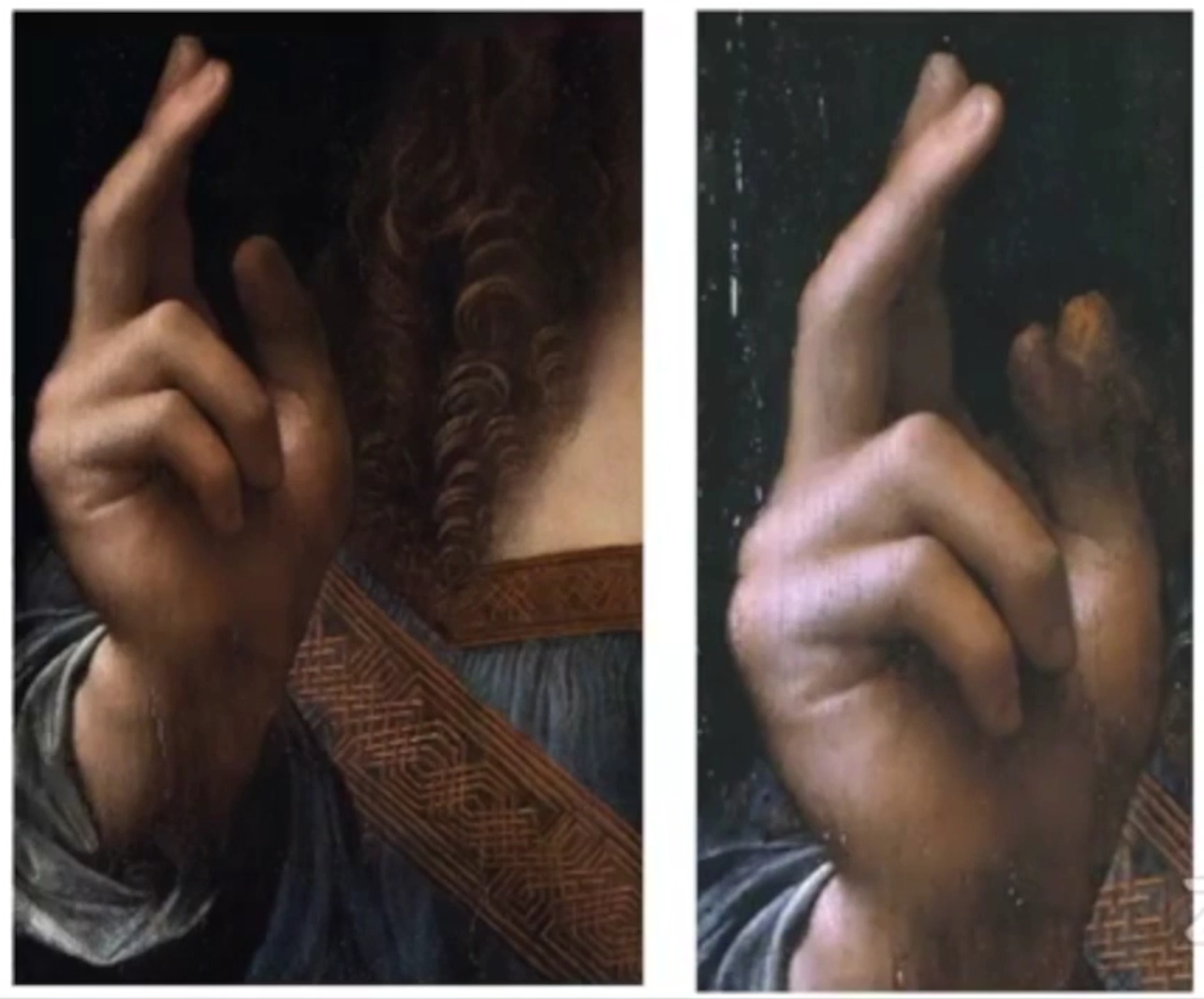




One) A History of Gestures – The Bigger Picture
What we see in the earliest of the above examples – the blessing gesture in the unfinished Adoration of the Magi,
showing a straight thumb – is the classic Latin blessing (benedictio latina): The first three fingers are stretched,
fourth and fifth fingers are bent. Looking at the bigger picture we have to make a distinction between the Latin and the
Greek blessing (benedictio graeca; the thumb meeting the fourth finger), but the latter, in the context of our
discussion, is only of marginal importance.
What is a blessing at all? What does a blessing gesture mean? In simple terms one could say that someone giving a blessing
has someone receiving a blessing participate in an immaterial good (for the theological background see here. Below
we show two examples for the Latin blessing gesture (the Virgin of Montserrat and a Blessing Christ sculpture from Baviera;
and one example for the Greek blessing (pictures below: Csiraf; Wolfgang Sauber; swzofia.warszawa.opoka.org).


The Latin blessing tradition can be seen as the main tradition in the West, but since the 13th century a second tradition
adds to that mainstream. A tradition that has the whole hand opened. This tradition was apparently declared to be
authoritative by Pope Pius V in the 16th century, with the Counter-reformation preferring more grave and dignified gestures.
But the open hand gestures existed already earlier, and also at Leonardo’s time. Below we see Pope Pius V, as being
painted by El Greco and exemplifying the open hand blessing gesture, that already can be seen in the (rather large)
Salvator Mundi group that is to be associated with Giampietrino (example on the right).
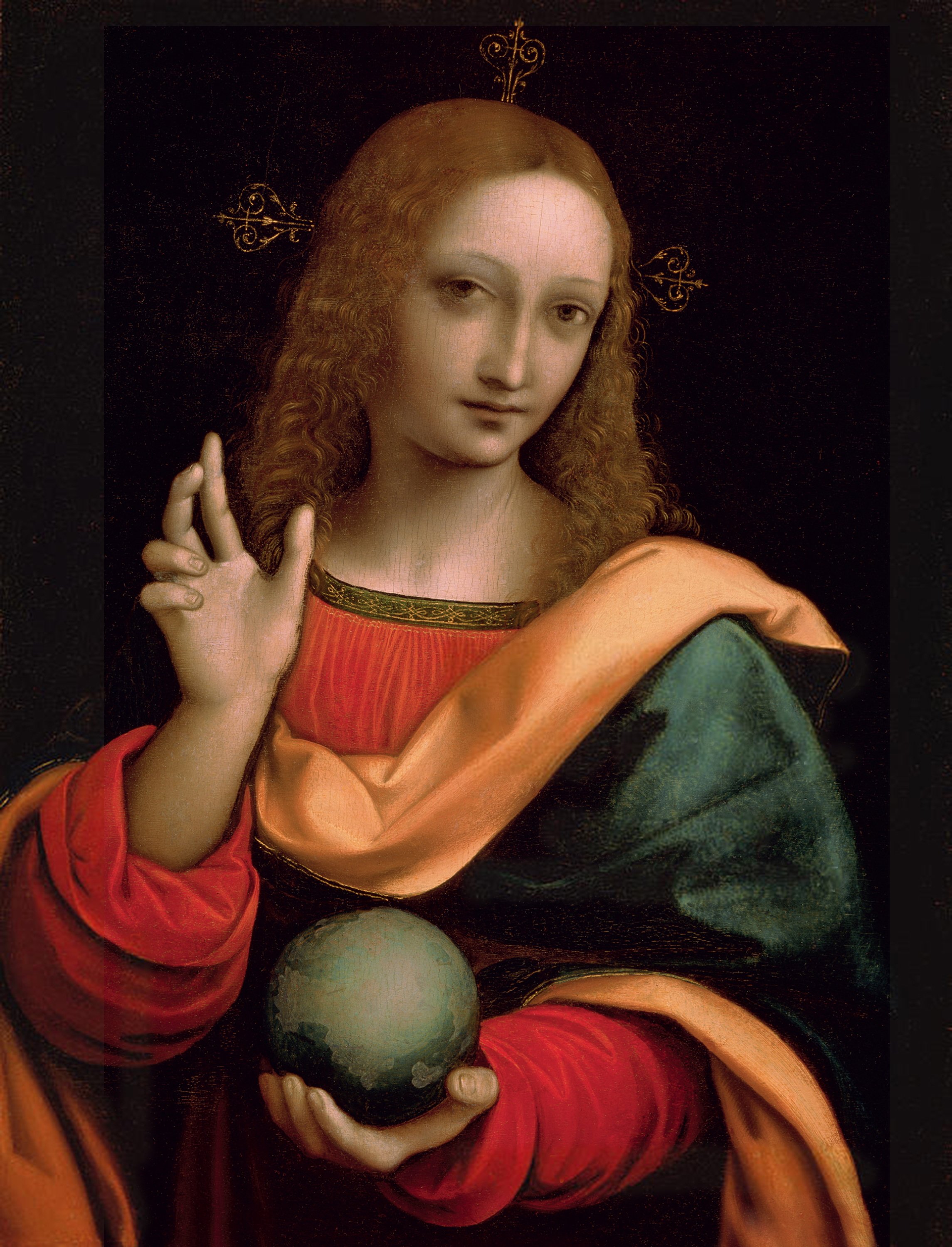
We can sum up that Leonardo began, in the Adoration, with the conventional Latin blessing and then, in the Virgin of
the Rocks, switched to an alternative (also seen as the ›final position‹ in the Salvator Mundi) that seems to be his own.
But was it indeed?
Two) Pre-1495-Leonardo
The solution that Leonardo chooses for the Virgin of the Rocks has the thumb bent. And there are several possible
interpretations to explain why Leonardo did that: first of all the three stretched fingers of the traditional Latin
blessing can be associated with the concept of the Trinity. But also the version with the thumb bent can be associated
with a theological concept: the Two Natures of Christ. The choice for either version could simply be motivated by wanting
to allude to the one concept or to the other. But the version with the thumb bent has one peculiarity: it can also be
interpreted as the hand being in movement, preparing the traditional gesture, with the thumb about to be
stretched, and thus even both theological concepts could be covered – with the viewer having to think the hand being in
motion (which, from an artistic standpoint, would also be the more interesting painterly concept, more interesting than
just to reproduce a stereotyped gesture). This might perhaps, in some cases, have caused irritation with viewers
expecting the conventional blessing gesture in a picture, but certainly the solution Leonardo did choose for the Christ
child in the Virgin of the Rocks was a more subtle version, not only indicating movement, a blessing gesture about to
be performed, and also the Christ child about to find the gesture, to learn about it in a playful manner. We don’t know
if these interpretation are correct, but these are the options of interpretation that I see. By the early 1480s Leonardo
must have thought through what a blessing gesture was, and how to paint it (in various manners). I tend to think that the
version with the thumb bent was mainly motivated by wanting to allude to the Two Natures concept, since we also see a
thumb bent for example in an rather early picture by Giovanni Bellini (below, right). This means also: having the thumb
bent was not even a Leonardesque ideosyncrasy. It was not Leonardo’s own.

In his discussion of the Portrait of a Musician Pietro C. Marani does mention that Antonello da Messina had visited Milan
in the 1470s (Marani 2005, p. 163f.), and he also does postulate that Leonardo hence must have known the portrait style of Antonello.
By the same logic one could postulate that Leonardo must have known the Blessing Christ by Antonello (dated usually
1465, due to the inscription). We don’t know if this was the case, but if it was, Leonardo must have seen the open hand
blessing gesture in this picture (with another famous pentimento, since the position of the hand was shifted).
The open hand variant does, for example, also show in a depiction of a blessing Christ from Bergamo and being associated with Vincenzo Foppa (or
Zenale, or an unknown painter). Both examples are shown below. And with acknowledging these examples we arrive at Milan,
in c. 1495.

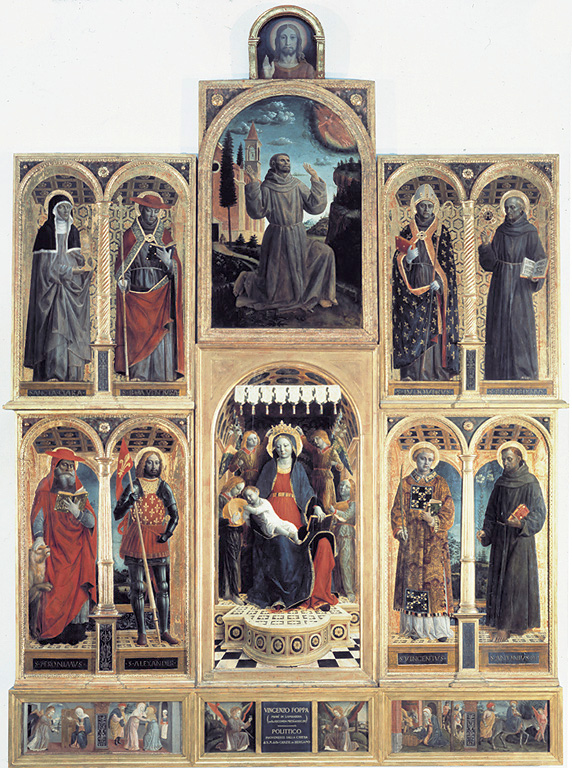
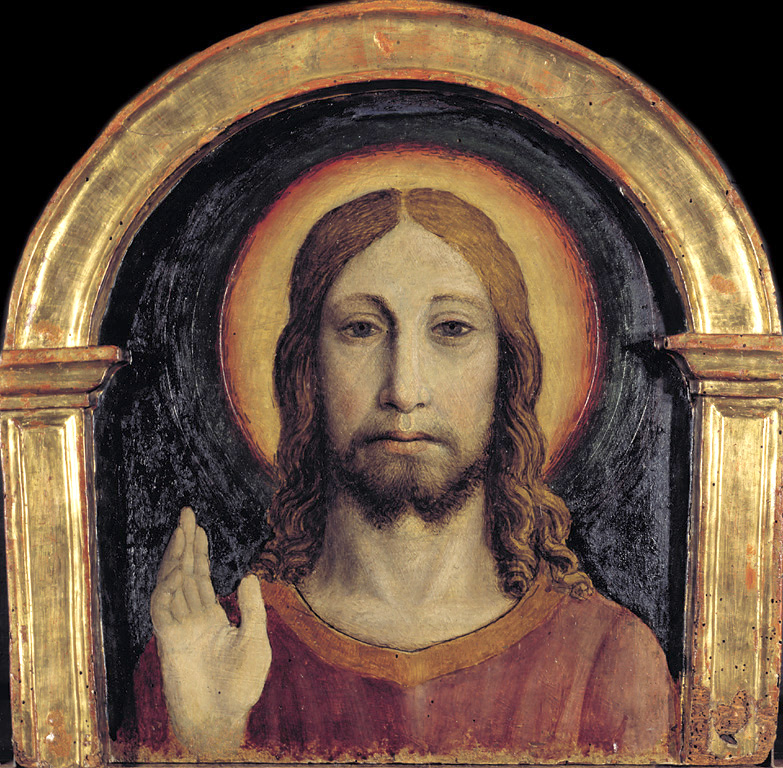
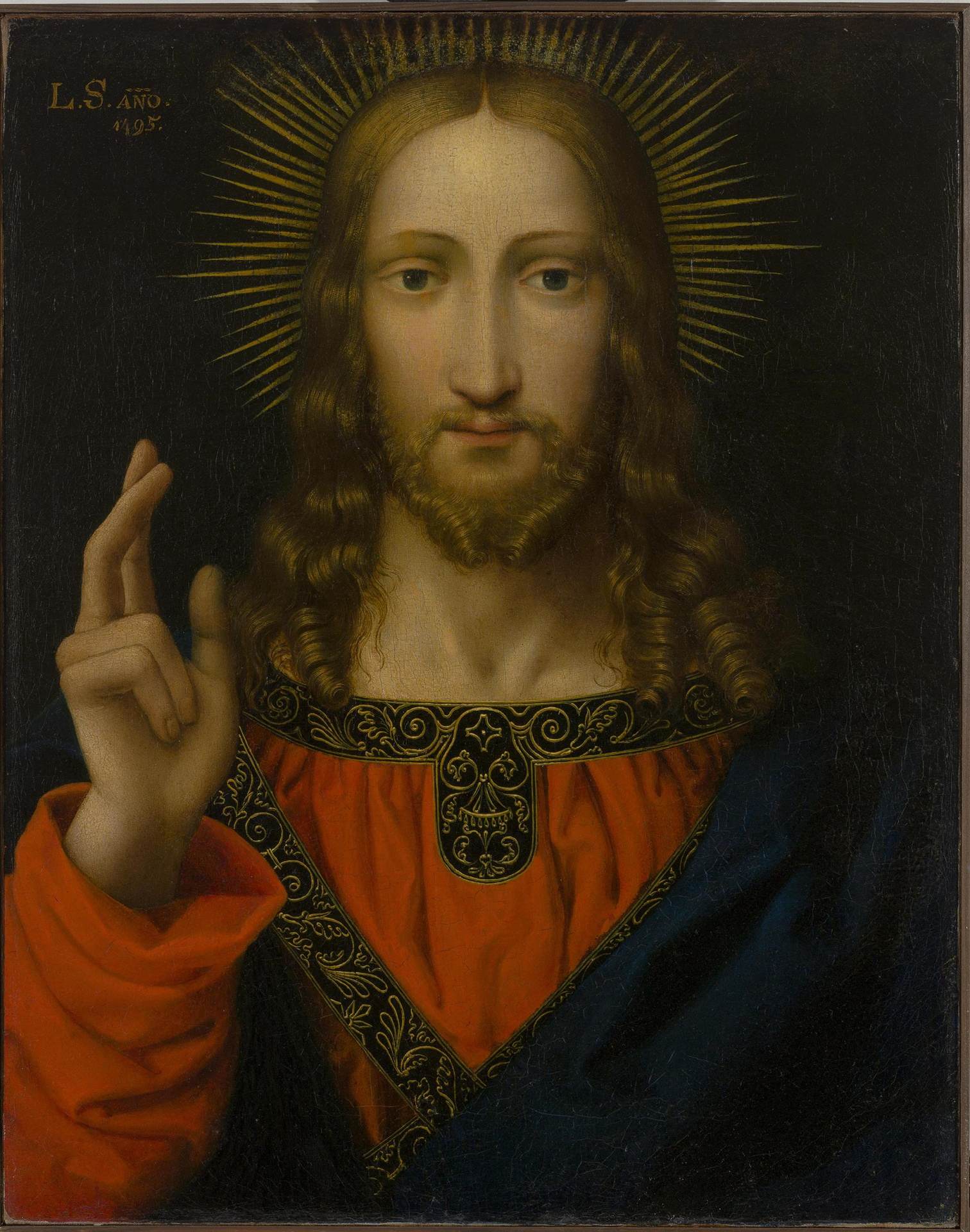
Three) Milan, c. 1495
We arrive at Milan in c. 1495, because here we seem to find the first Salvator Mundi-related Blessing Christ:
the picture of the Hermitage I have discussed already in various episodes, signed and dated 1495, and with its
characteristic inquisitory gaze. It also shows the conventional Latin blessing (benedictio latina), the thumb being
stretched, and thus we see option 1 of the thumb, if we think of the Salvator Mundi version Cook.
And this is not all: since we also do find the much neglected so-called Master of the Pala Sforcesca in c. 1495, who did
paint this Pala in 1494-95 (for Ludovico Sforza), at the same time Leonardo seems to have found his own basic
Blessing Christ/Salvator Mundi-design – nearby, as one might say, if thinking of geography.
And this very year, c. 1495, to be precise, is also the date of a St. Ambrose (Bergamo) by the Master of the Pala
Sforzesca (below; picture: lacarrara.it), a picture that not only shows conventional Latin blessing as well, but also a
crossed stole. And this is not all: the Fitzwilliam Museum of Cambridge owns an (also neglected) Salvator Mundi
that is attributed to this very master. If this attribution is correct, option 2 did exist long before Salvator Mundi
version Cook was being made, since the Master of the Pala Sforzesca was active in the 1490s, and since this Salvator
does show the thumb as being bent (see also below).



We know that the Master of the Pala Sforzesco had carefully looked at the Virgin of the Rocks by Leonardo, since
another attributed picture does show the reception of this crucial work by Leonardo, including a blessing hand with thumb
bent (as in the Virgin). Be the Fitzwilliam Salvator by the Master of the Pala Sforzesca or not, this master did
know both versions of depicting a blessing hand anyway (the St. Ambrose, and the Virgin of the Rocks-influenced
picture do show it). These pictorial conventions must have been common language long before the switching from option 1
to option 2 in the Salvator Mundi did happen. And this means: the interpretation of this pentimento is overburdened
with meaning. It was a switching from convention 1 to convention 2, from one theological concept to another, from one
idea from the repertoire to another conventional idea – but these ideas existed long before and cannot be seen as
manifesting much creative energy; and certainly not much genius was required to reach at the so-called ›final position‹.
Anybody familiar with pictorial conventions, theological concepts, anyone familiar with the repertoire of the workshop,
even anybody from another workshop could have been responsible for it.
Four) The Aftermath
I am not going to repeat here what I have said in the episode in which I have sketched out a ›Salvator Mundi family
tree‹. This family tree could be updated with a further picture to be added to the Marco group, one to be added to the
Giampietrino group, and we could also show Luini ›joining the chorus‹, which means also contributing one picture to the
rather large group which has the hand, as in the Pushkin Salvator, opened.
What is more crucial here: the question if Salvator Mundi versions did exist that show thumb option 2 – and which are
earlier than version Cook can be answered with yes. In my view we have a high probability that these Master of the
Pala Sforzesca attributed pictures are earlier, and even if they are not, there is a high probability that some pictures
of the Marco group (with the significant orb) are earlier, and if not, version Ganay might be earlier. And if not,
option 2 did exist in the Virgin of the Rocks anyway, if shown in profile (but this does not change the concept a bit).
It is noteworthy that the later, end 16th century Salvator Mundi versions stick to option 2. Which means, even if the
authors might have had alternative theological preferences – one did respect the design by Leonardo in that respect, as
can be seen in the Detroit version (below).
But what are now the consequences of all the above for the narrative of the proponents of the autograph theory?

Five) Conclusions
In his Leonardo da Vinci. The 100 Milestones-book of 2019 Martin Kemp dates the Salvator Mundi »c. 1504-10».
The two seemingly related Windsor sheets he dates »c. 1504«. I have said already above that the best that I can say of
the narrative of the proponents of the autograph theory is that it is incomplete. It is the Hermitage picture that
raises most of the questions, but it is not only the Hermitage picture. Even without the Hermitage picture, with all the
above we have raised the question, if the pentimento – as the most frequently and usually preferredly at the beginning of
every discussion – named argument for autograph attribution, has not been dramatically overburdened with meaning, since
the conventionality of gestures had not been seen or known, and thus been ignored.
With the Hermitage picture we have a dramatic change in Salvator Mundi thinking. The main question it raises (if being
authentic, which is what I believe) is the question: do we really have to assume that Leonardo produced an autograph
painting, long after other artists (the author of the Hermitage picture; but also the Master of the Pala Sforzesca) had
realized or used or reproduced his ideas?
What about the dating? Will it be maintained? Or will it be shifted now – to ›prior to 1495‹? If yes, what about the
Louvre comparison with late work x-ray pictures? Are these suddenly obsolete now as supportive arguments? And the seeming
preparatory drawings at Windsor – will these be predated as well? Is this even possible? And the references to Leonardo’s
notes, to history (rock crystal assessment for Isabella d’Este) – all obsolete now? And the ›Eying-bubbles-in-glass›-
drawing that I consider to be the best proof that the Salvator comes from Leonardo’s or Melzi’s workshop (a better proof,
by the way, than anything we have heard in the past 10 years) – will it be re-dated as well? Is this possible at all?
And the comparisons in style? The alleged consistency with – variably – late style sfumato or Florentine period? All
obsolete now? And all the other version? All later than ›c. 1504-10‹? Really? Why? How do you know?
But most of all: will the pentimento argument still be used to maintain an autograph theory? Based on what reasons? Why?
Also by the Louvre? And how to rule out alternative interpretations (a mere switching from one convention to another)?
The future will show how all the above will be answered – or not be answered – by the Salvator Mundi world, by
Leonardists and by other proponents of the autograph theory.
Selected Literature:
Martin Franz Mäntele, Die Gesten im malerischen und zeichnerischen Werk Raffaels, PhD-dissertation, Tübingen 2010,
PDF (text; images)
Pietro C. Marani, Leonardo. Das Werk des Malers, Munich 2005

The Bottega of Leonardo da Vinci
The picture of the bottega of Leonardo da Vinci is not as blurred as one might imagine (for details see Seidlitz 1935, p. 530; Marani 1998). We will focus here on the early and middle years (up to 1512), and not on the late years, and one might begin with saying that with Boltraffio and Marco d’Oggiono we see two figures enter the orbit of Leonardo at the beginning of the 1490s that we believe to know rather well. We also see Salaì enter the orbit, at a very young age, and we have, in addition to that, a couple of names, names of figures that we do not seem to know very well, or not at all (a Giacomo, Giulio Tedesco, Galeazzo). Last but not least we have the Giampietrino problem: Giampietrino enters the scenery, but it is a matter of controversy (as far as this question is debated at all), when, since also Giampietrino is still very young.
It is noteworthy that Marco d’Oggiono, already at the end of the 1480s, seems to have had an own apprentice, and that Marco and Boltraffio did create the Pala Grifi together (a picture today in Berlin; picture above), even before Leonardo began to work at The Last Supper in 1495. Due to the work of Janice Shell and Grazioso Sironi we today do know more about Francesco Galli, also called Francesco Napoletano, who did die in Venice as early as 1501. One might imagine that Galli went to Venice with Leonardo in 1501, and if Galli, during the 1490s, for example might have cooperated with Marco, we would have found an interesting perspective: since, if only one single picture of the Marco group would be associated with Francesco Galli/Francesco Napoletano, we would have a picture with hand option 2, a picture that must have been created before Galli died in 1501. Which would mean that hand option 2 must have existed early, and my theory of the pentimento in version Cook as a mere switching from (preexisting) option 1 to (preexisting) option 2 would be positively proven as well as the theory of the pentimento supposedly showing the creative energy of genius (changing his mind) would be definitively falsified.
Brief: in the 1490s Leonardo mentions once that he had paid ›two masters‹ (probably Marco and Boltraffio) for two years; and once that he had six bocche to feed (probably again Marco, Boltraffio, plus Salaì and some of the unknowns).
Below a rather early Marco picture (according to Janice Shell), the Young Christ Blessing of the Galleria Borghese:
And here is a picture (not the only known picture) by Protasio Crivelli, formerly the apprentice of Marco d’Oggiono (picture by Sailko; the date appears to be 1498; location: Naples, Museo di Capodimonte):
In 1501 (3.4.) Pietro da Novellara informs Isabella d’Este that Leonardo seems to live ›from day to day‹ (see Marani 1998, p. 14). And he has seen Leonardo intervening from time to time in portraits done by two of his garzoni (»fano retrati«). But who are these, and which portraits are these (if this would have been about a Isabella d’Este portrait, Pietro would have noted; and after the Sforza had been expelled, portraits of court ladies and courtiers made no sense)? After having written on the picture of a young woman in the Columbia Museum of Art in one of the last episodes, I would now suggest the following:
Leonardo might have done a portrait of a Sforza court lady in the early Milanese years (and still in the Florentine portrait style), a portrait in terms of a drawing or a cartoon. He might have begun also a painting, but since the Sforza court got expelled and exiled after the French invasion, he might not have finished such portrait. He might instead have used it for the instruction of his garzoni: the Columbia picture might have been the one begun by Leonardo (as he seems to have begun portraits with the face, as later in the Mona Lisa), a picture that he might have had a pupil finish, with him retouching it again, adding some lustre. The picture in a private Russian collection might be a second version that he had a pupil repeat (after the first version and the drawing, respectively the cartoon). The Columbia picture shows much gusto for the grotesque, the second version less so, but still to some degree. Thus we would see pictures that have their origins in the first Milanese period (and even in the early Florentine period), but were actually done later (after 1500). And Leonardo might have had a hand in the Columbia picture whose head with the hair as well as the ornated hair net superbly being modelled into the dark is of exquisite quality (as also a single one pearl is, while other pearls are rather mediocre as also the bust and the modelling of the dress is). We see, as I have attempted to show in episode 13, two pictures that fit into the context of Leonardo’s thinking and doing rather than into the context of Boltraffio’s autonomous work: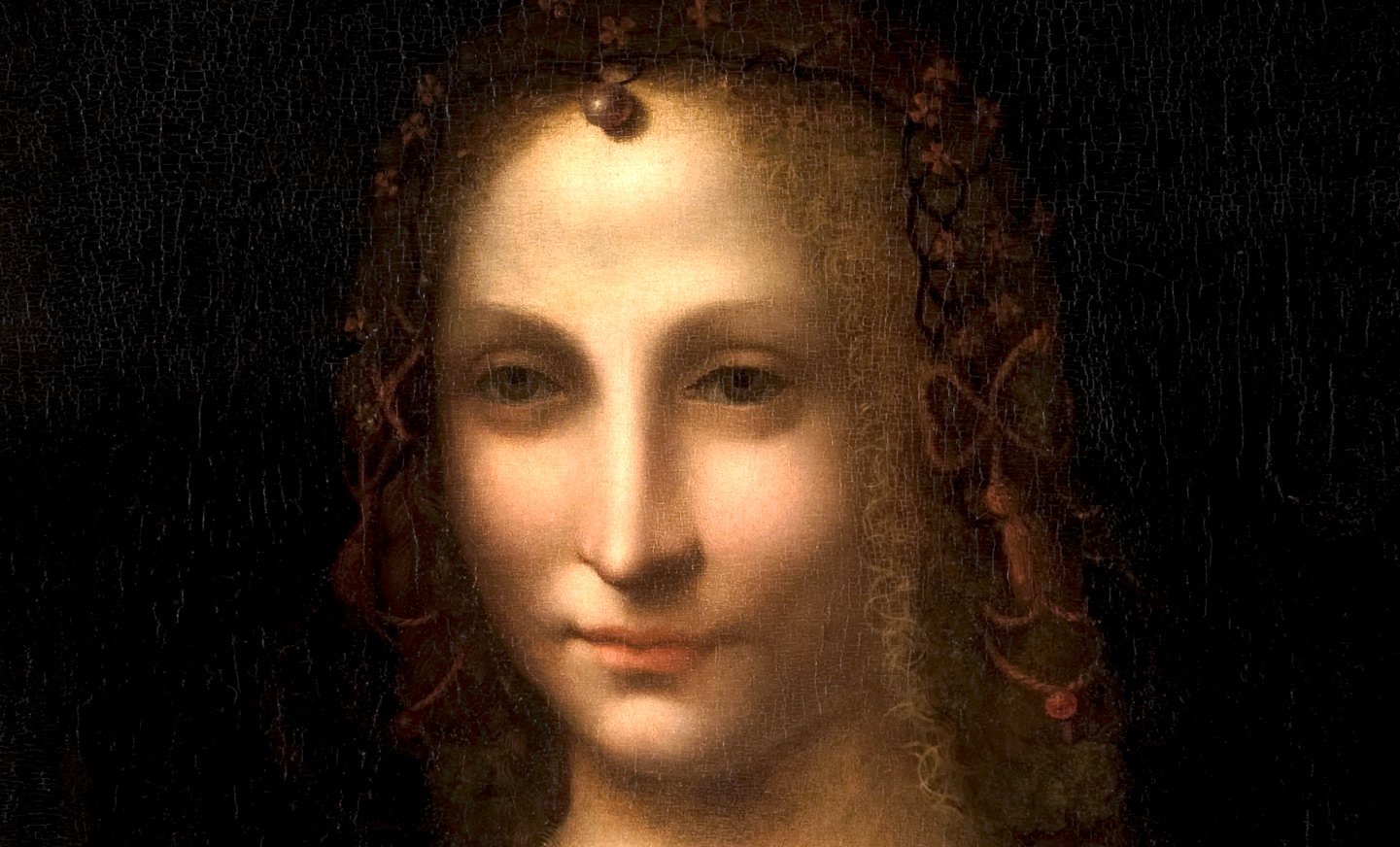
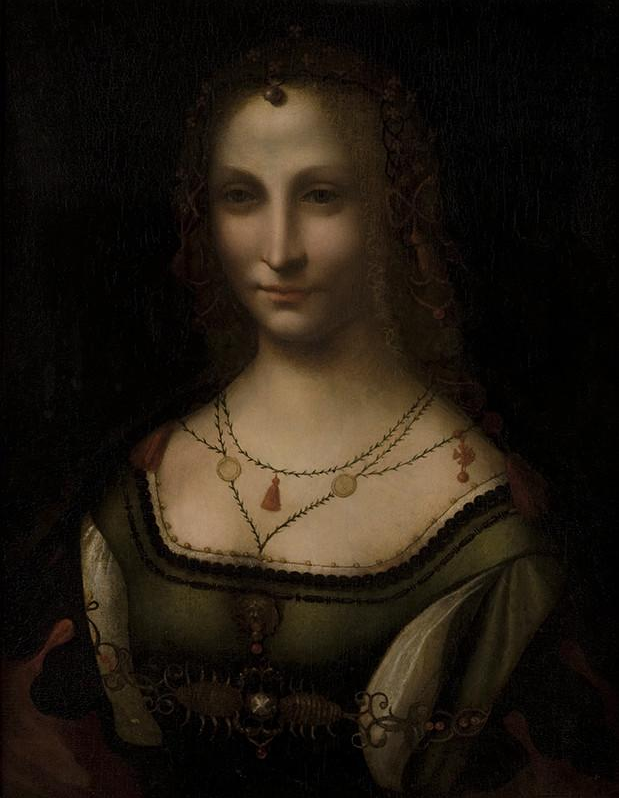
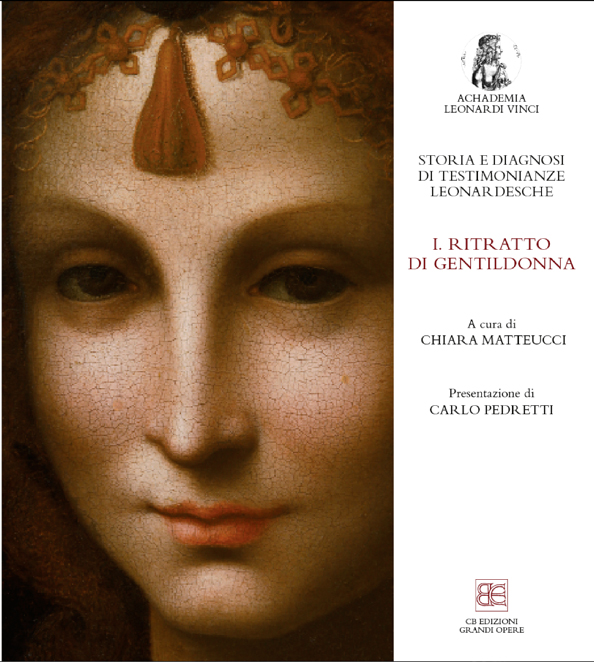
In 1504 a Jacopo Tedesco, in 1505 a Lorenzo (di Marcho) enter the orbit of Leonardo.
In around 1505 Fernando Yáñez enters the orbit of Leonardo, helping him with the Battle of Anghiari (as also does Riccio della Porta). Yáñez cannot be the author of the Prado Mona Lisa, if the Louvre Mona Lisa was finished only years later, since the dates (showing that Yáñez was active in Spain after 1506) do not allow to postulate it. In works of Yáñez done in Spain, however, we find echoes of Leonardo’s works (see the example below).
Around 1507 Francesco Melzi becomes a pupil of Leonardo (and also a sort of secretary).
In 1511 (or even earlier) Giampietrino is an autonomous master.
In 1511 Salaì seems to have created a (signed and dated) picture of Christ:
In around 1511 we see Marco, Boltraffio, Giampietrino and – Giovanni Agostino da Lodi in close contact, not only because we have a source indicating exactly that – we also have pictures indicating exactly that, and one of these pictures seems to be even dated (but the ›date‹ – ›XII‹ – is rather referring to the ›age of Christ‹):

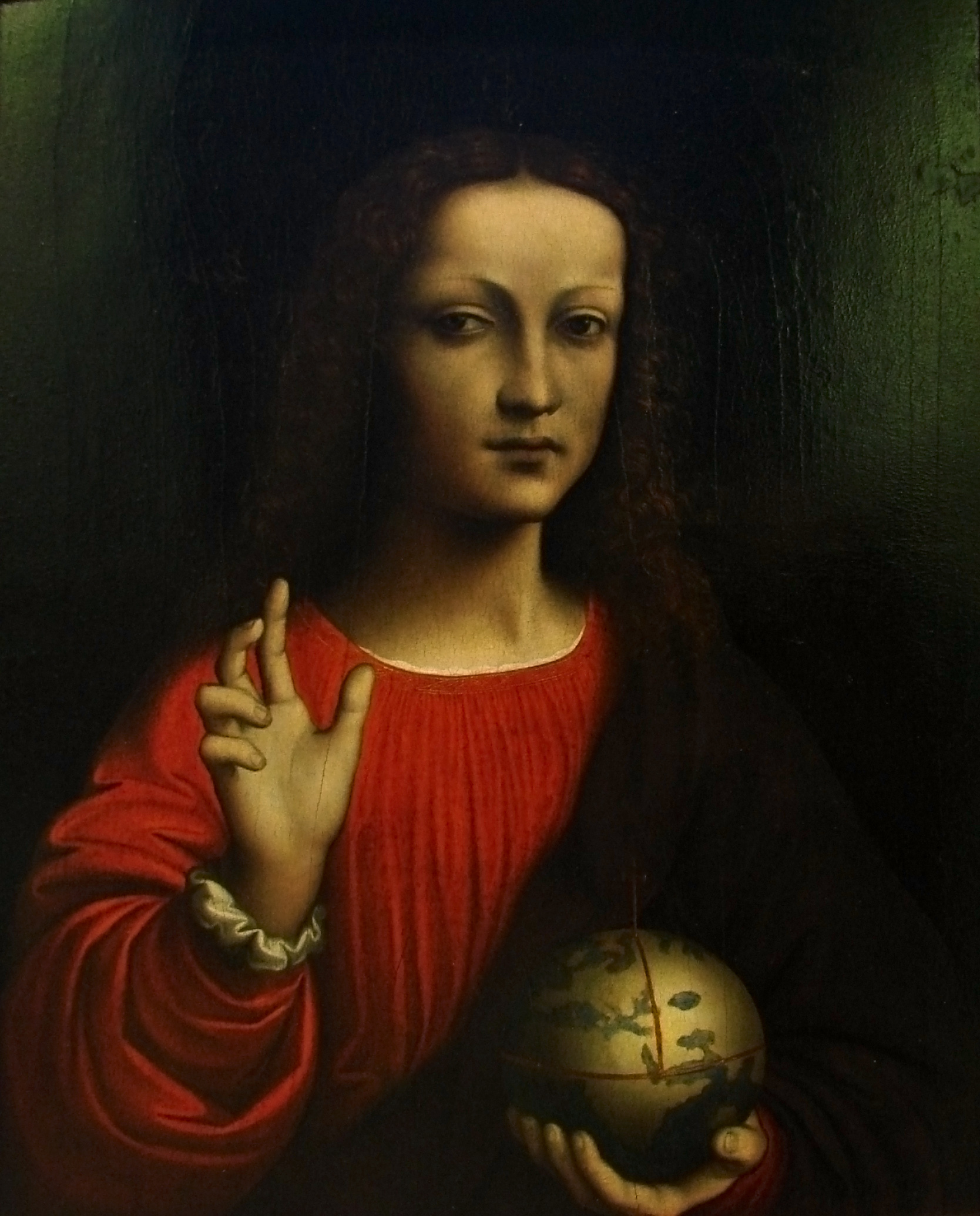
The Prado Mona Lisa (below) was probably begun at the time Leonardo also started reworking or completing the Louvre Mona Lisa, probably due to Giuliano de’ Medici wishing so, and hence perhaps in around 1511/12.
In around 1517 Marco d’Oggiono is cooperating with Giovanni Agostino da Lodi (see Shell, p. 173).
***
1516: Paolo Emilio, Italian-born humanist at the court of Francis I, publishes the first four books of his history of the Franks; death of Boltraffio.
1517: Leonardo da Vinci, with Boltraffio and Salaì, has come to France (picture of Clos Lucé: Manfred Heyde); 10.10.2017: Antonio de Beatis at Clos Lucé
1517ff: Age of the Reformation; apocalyptic moods; Marguerite of Navarre, sister of Francis I, will be sympathizing with the reform movement; her daughter Jeanne d’Albret, mother of future king Henry IV, is going to become a Calvinist leader.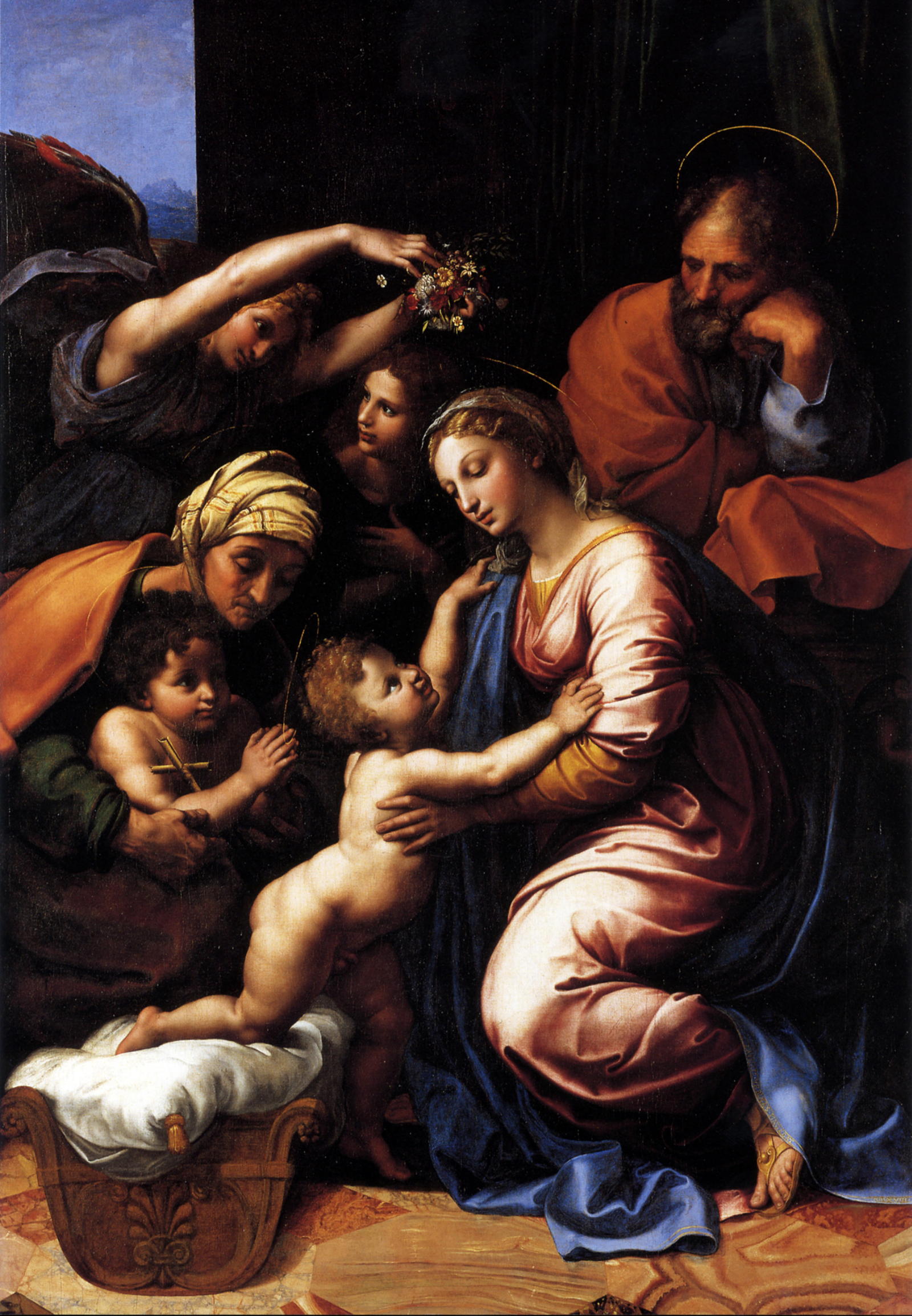
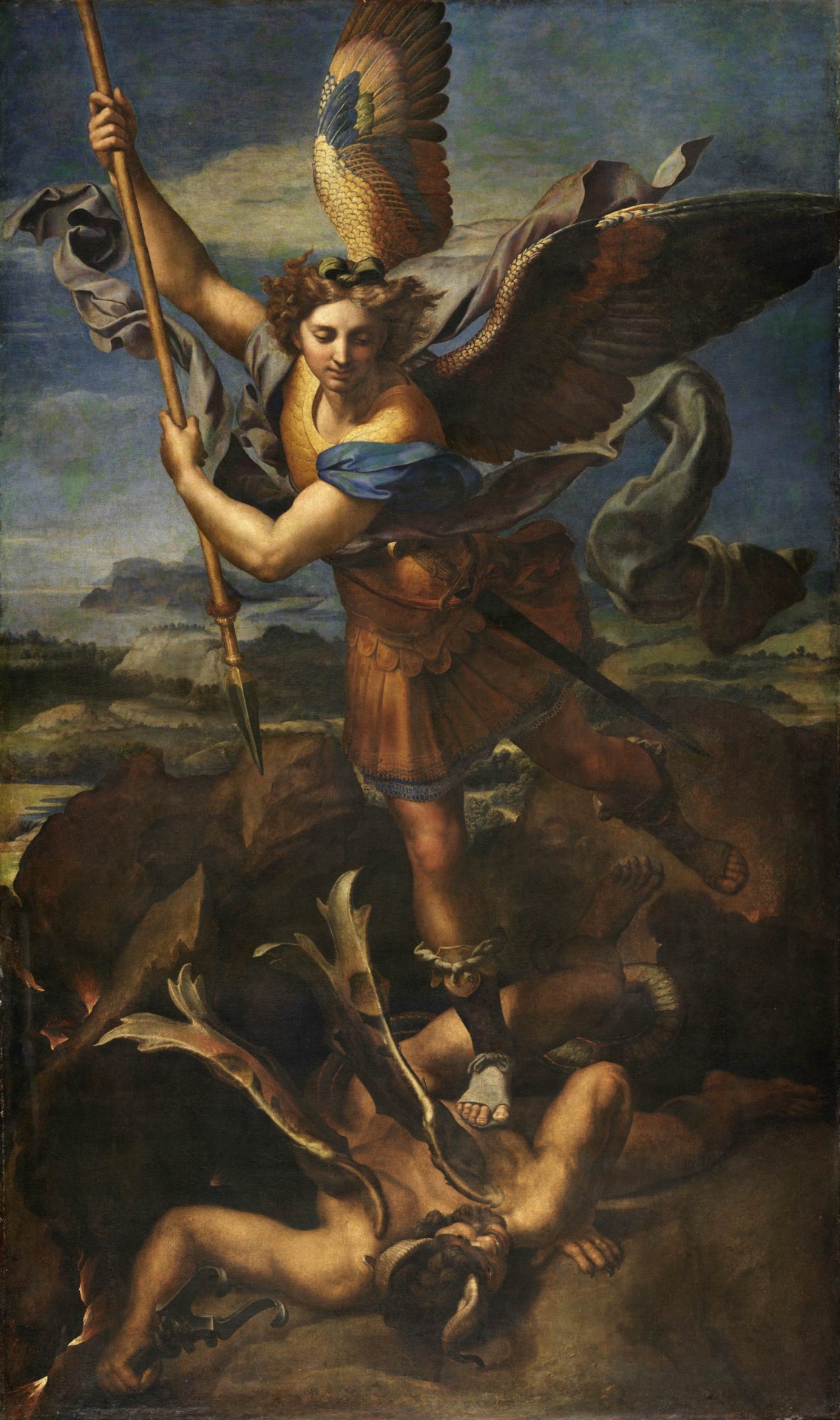
1518: the Raphael workshop produces/chooses paintings to be sent to France; 28.2.: the Dauphin is born; 13.6.: a Milanese document refers to Salaì and the French king Francis I, having been in touch as to a transaction involving very expensive paintings: one does assume that prior to this date Francis I had acquired originals by Leonardo da Vinci; 19.6.: to thank his royal hosts Leonardo organizes a festivity at Clos Lucé.
1519: death of emperor Maximilian I; Paolo Emilio publishes two further books of his history of the Franks; death of Leonardo da Vinci; Francis I is striving for the imperial crown, but in vain; Louise of Savoy comments upon the election of Charles, duke of Burgundy, who thus is becoming emperor Charles V (painting by Rubens).
1521: Francis I, who will be at war with Hapsburg 1526-29, 1536-38 and 1542-44, is virtually bancrupt.
1523: death of Cesare da Sesto.
1524: 19.1.: death of Salaì after a brawl with French soldiers at Milan.
1525: 23./24.2.: desaster of Francis I at Pavia. 21.4.1525: date of a post-mortem inventory of Salaì’s belongings.
1528: Marguerite of Navarre gives birth to Jeanne d’Albret (1528-1572) who, in 1553, will give birth to Henry, future French king Henry IV.
1530: Francis I marries a sister of emperor Charles V.
1531: death of Louise of Savoy; the plague at Fontainebleau.
1534: Affair of the Placards.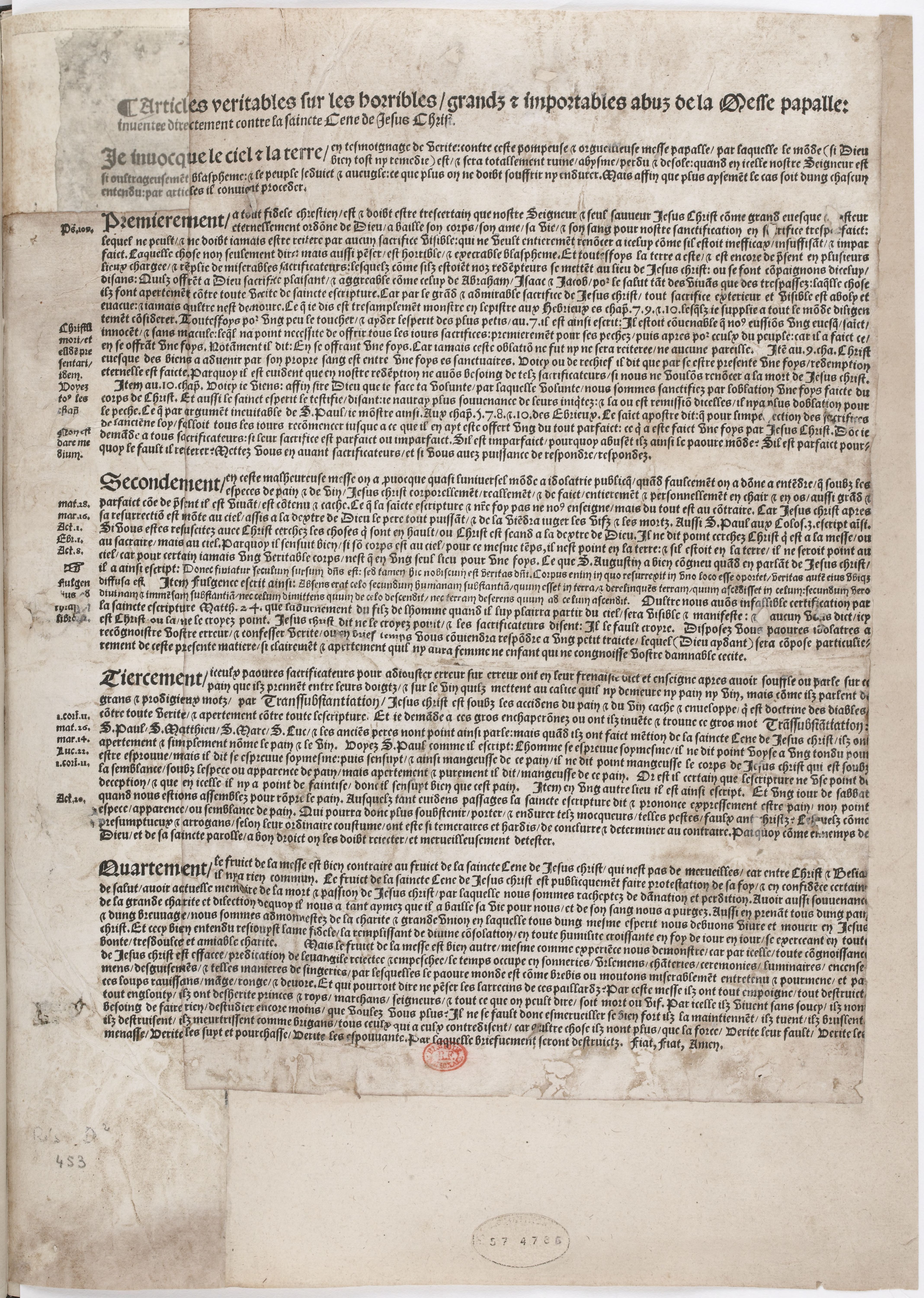
1539: the still unfinished chateau of Chambord is being shown by Francis I to Charles V.
1540s: the picture collection of Francis I being arranged at Fontainebleau.
1544: January: Marguerite of Navarre sends a letter of appreciation to her brother, king Francis I., who has sent her a crucifix, accompanied by a ballade, as a new year’s gift.
1547: death of Francis I.
1549: death of Marguerite de Navarre; death of Giampietrino.
1553: Jeanne d’Albret gives birth to Henry, the future French king Henry IV and first Bourbon king after the rule of the House of Valois.
1559: publication of the Heptaméron by Marguerite de Navarre.
1562-1598: French Wars of Religion.
1570: death of Francesco Melzi.
1589: Henry, grandson of Marguerite de Navarre and grand-grandson of Louise of Savoy, but by paternal descent a Bourbon, is becoming French king as Henry IV.
2015: an exhibition at the Château of Loches is dedicated to the 1539 meeting of king and emperor (see here).

»…in the evening at twenty-two o’clock we saw the Holy Sindon or Shroud«, Antonio de Beatis is writing in his travel account, his trip across Germany, France, the Netherlands and Northern Italy having enabled him to recall, as an eye witness, essential sights of the visual culture of Europe in 1517/18. These sights included, as said above, the Ghent Altarpiece, the Turin Shroud and also Leonardo da Vinci’s Last Supper at Santa Maria delle Grazie, Milan (picture of the Turin Shroud: Dianelos Georgoudis). Only the now so-called Turin Shroud, however, did apparently stimulate him to include a visual reproduction, a drawing, into the manuscript copies of his account.![]()
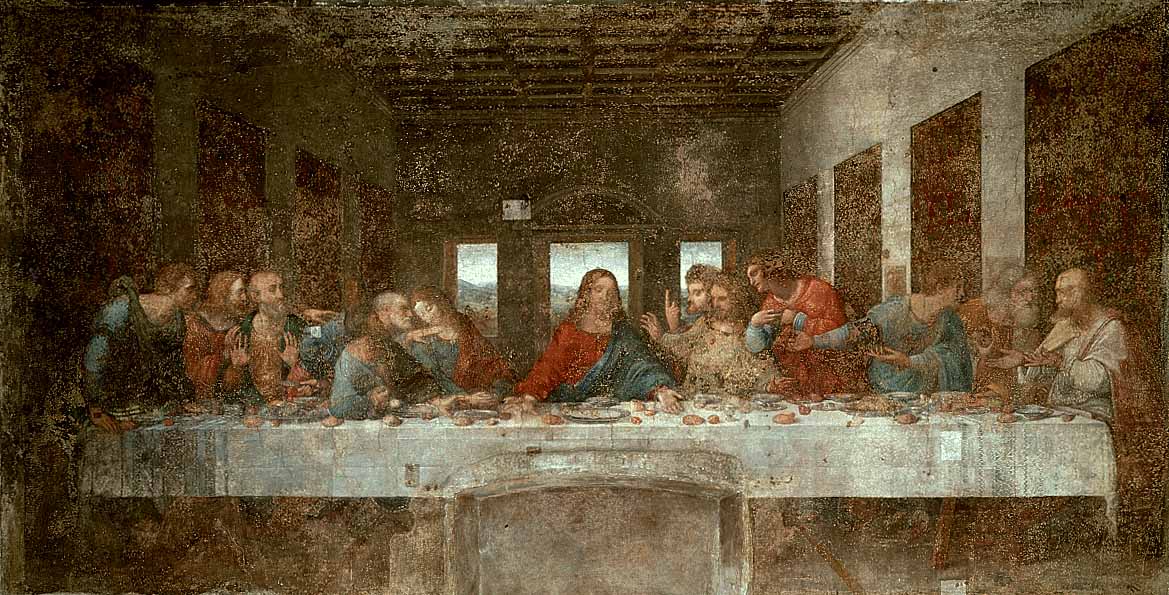
See also the episodes 1 to 21 of our New Salvator Mundi History:
Francis I and the Crown of Charlemagne
The Chronicles of Santa Maria delle Grazie
A Brief History of Digital Restoring
Learning to See in Spanish Milan
And:
MICROSTORY OF ART
ONLINE JOURNAL FOR ART, CONNOISSEURSHIP AND CULTURAL JOURNALISM
HOME
© DS